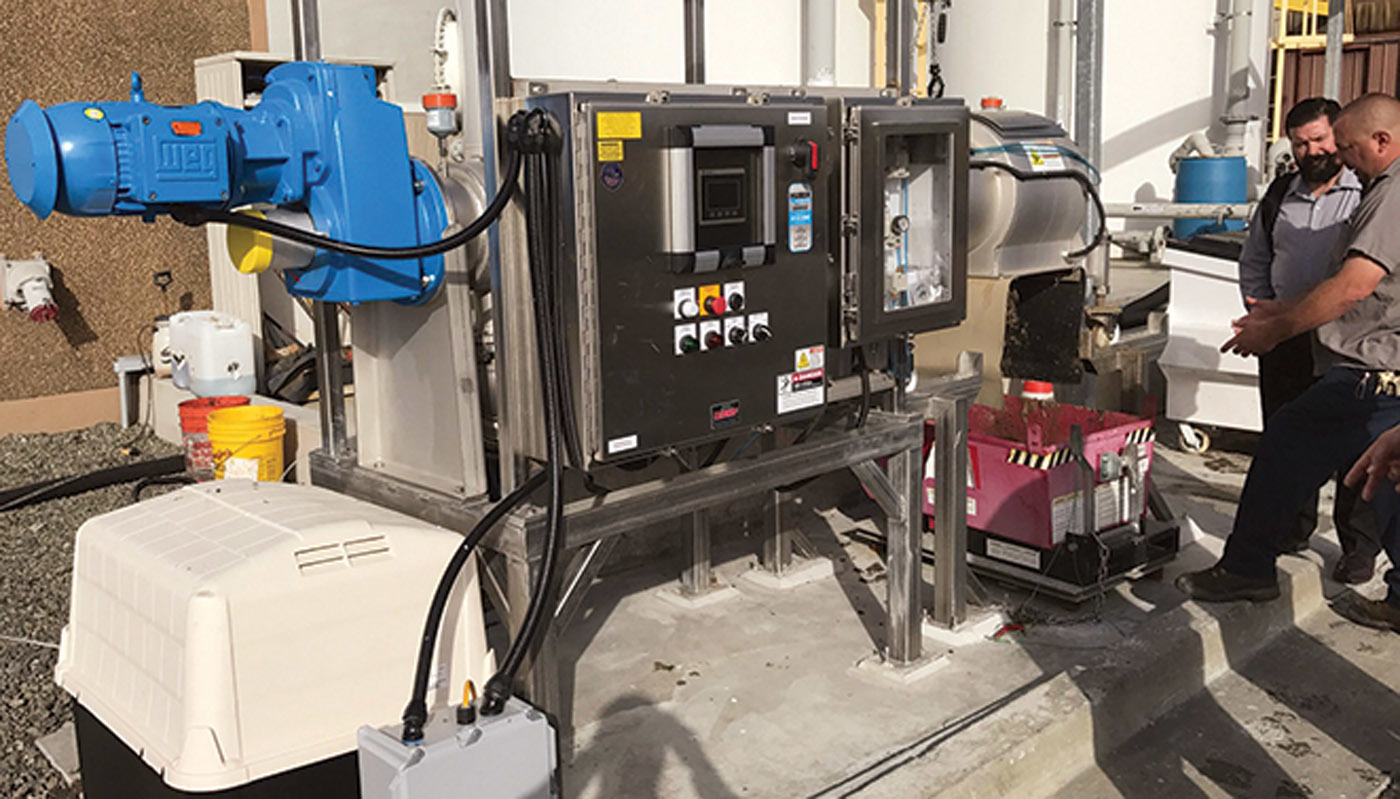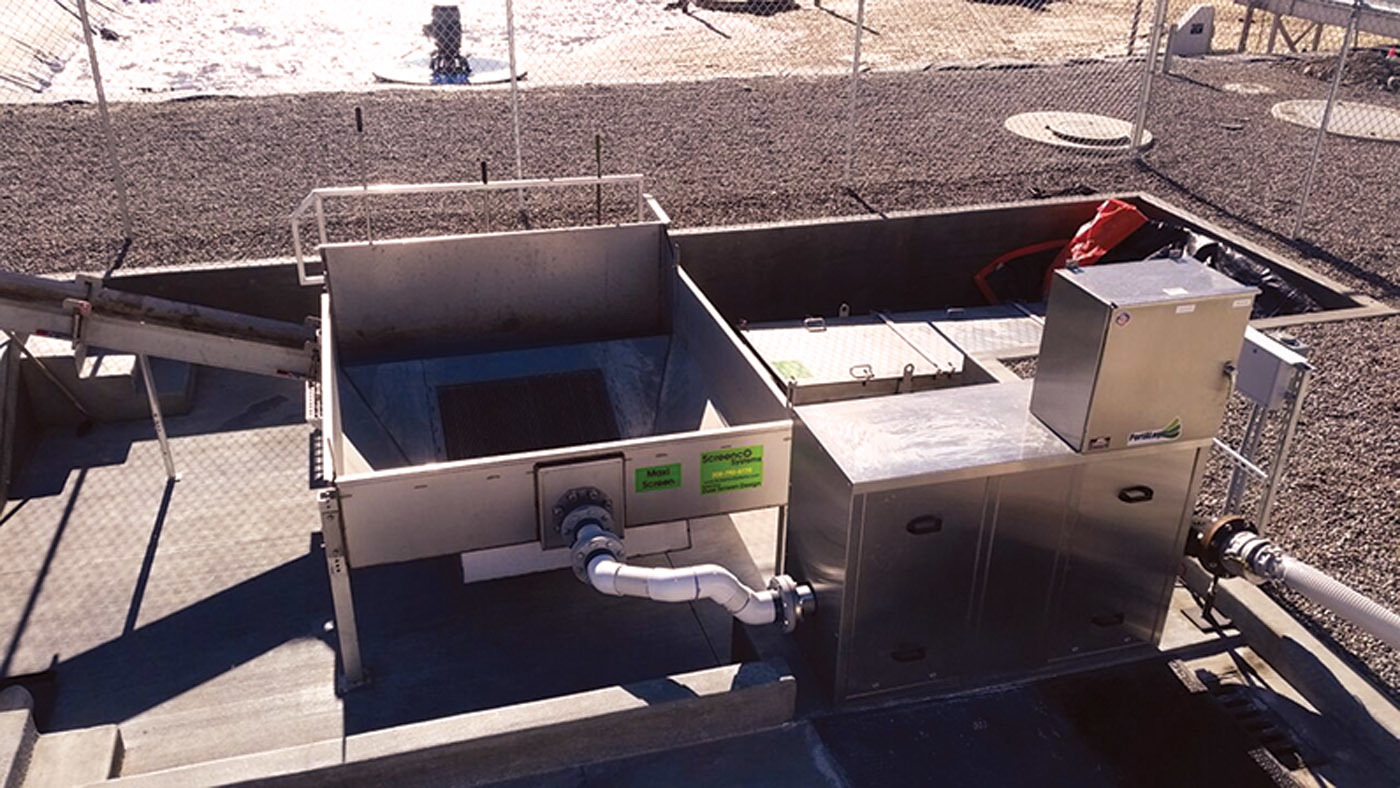Press unit helps streamline FOG receiving
Problem: Napa Sanitation District in California struggled with a bucket-type screening system for its FOG receiving and injection system. Debris was captured by the strainer, which clogged it frequently causing a halt in the process. Manual unclogging was nasty, hazardous work.
Solution: The Strainpress from HUBER Technology was used to streamline operations by removing debris from the waste stream in an efficient, automated manner. It operates by pressing unscreened liquid through a screening zone where the coarse material is retained on a cylindrical screen. The debris is then stripped off by a coaxial screw and pushed through to the press zone where the material is extensively compacted and dewatered. The screw operates automatically when the pressure sensors detect a differential pressure caused by screen surface blinding. The compacted material is then pressed through a gap around a hydraulically operated pressure cone, which closes part of the pipe end and builds up counter pressure. The counter pressure of the cone is automatically regulated inversely proportional to the screw motor load.
Result: The Strainpress helped the district maximize its investment in the FOG receiving and injection system by improving operations, ensuring the protection of downstream components and enhancing the production of a valuable, revenue-generating asset. 704-990-2053; www.huber-technology.com.

Screening system helps district
get on top of septage waste
Problem: The West Montrose (Colorado) Sanitation District required septage-receiving equipment that needed the least amount of maintenance and could be operated with minimal staff time involved. The top complaint with automatic screening equipment was the amount of downtime and costs associated with maintenance issues.
Solution: The district chose ScreencO Systems equipment, a system built and designed by operators who struggled with automatic screening equipment. It has few moving parts and requires minimal maintenance. The dual screen size allows for rapid dumping without compromising screening ability.
Result: Since operation began Oct. 1, 2017, the district has received 1,283 loads and processed 1,476,135 gallons of septage through the system. The added Grit Eliminator has helped remove roughly 8.175 tons of grit. “By eliminating the grit from the septic waste, we are seeing less wear and tear on our facility pumps and less maintenance costs from cleaning out basins, pits and pipes,” says Andres Garcia, district manager. “We first intended our receiving station to be an alternative to land application, but we quickly found that most haulers prefer to dump at our facility. Their justification being that with the ScreencO System, they can haul approximately two to four additional loads per day due to the ease and practicality of the facility.” 208-790-8770; www.screencosystems.com.






